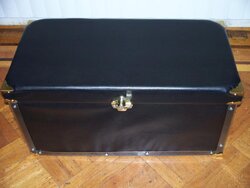- Joined
- November 11, 2005
- Messages
- 56,732
- Reaction score
- 1,195
- City, State
- Brooklyn, NY
- Year, Model & Trim Level
- 88 89 93 95 96 Aerostars
A few weeks ago I was walking around the neighborhood, and found an electric scooter that was in bad condition. It was thrown out because it has a burned out speed controller, rust, was missing batteries, the charger, screws, etc. The cost of one of these scooters is around $80 on sale, and $112 at the regular price so it's not worth investing the same amount of money or possibly more to repair it instead of getting a new one.
I wanted to modify it, and put it to good use getting around the congested neighborhood where it's impossible to find parking. I know that it was originally intended to be a kid's recreation toy but not for long. Here's what I plan to do with it:
Here's what I plan to do with it:
1. Remove anything that isn't necessary.
2. Add a bench seat, foot controls, and power accessories.
3. Upgrade the electrical system from 24 volts to 36 volts with 2 Ryobi 18 volt battery packs. The original batteries were lead acid according to online information. I have Ryobi 18 volt lithium ion batteries from my tools. Ryobi makes 40 volt batteries but I don't have them or a charger.
So far since I've found it a few weeks ago, I've been gathering information about electric scooters, golf carts, electric bikes, and other types of electric vehicles, and I feel that this project has potential to be a useful means of local transportation.
I wanted to modify it, and put it to good use getting around the congested neighborhood where it's impossible to find parking. I know that it was originally intended to be a kid's recreation toy but not for long.
1. Remove anything that isn't necessary.
2. Add a bench seat, foot controls, and power accessories.
3. Upgrade the electrical system from 24 volts to 36 volts with 2 Ryobi 18 volt battery packs. The original batteries were lead acid according to online information. I have Ryobi 18 volt lithium ion batteries from my tools. Ryobi makes 40 volt batteries but I don't have them or a charger.
So far since I've found it a few weeks ago, I've been gathering information about electric scooters, golf carts, electric bikes, and other types of electric vehicles, and I feel that this project has potential to be a useful means of local transportation.




































